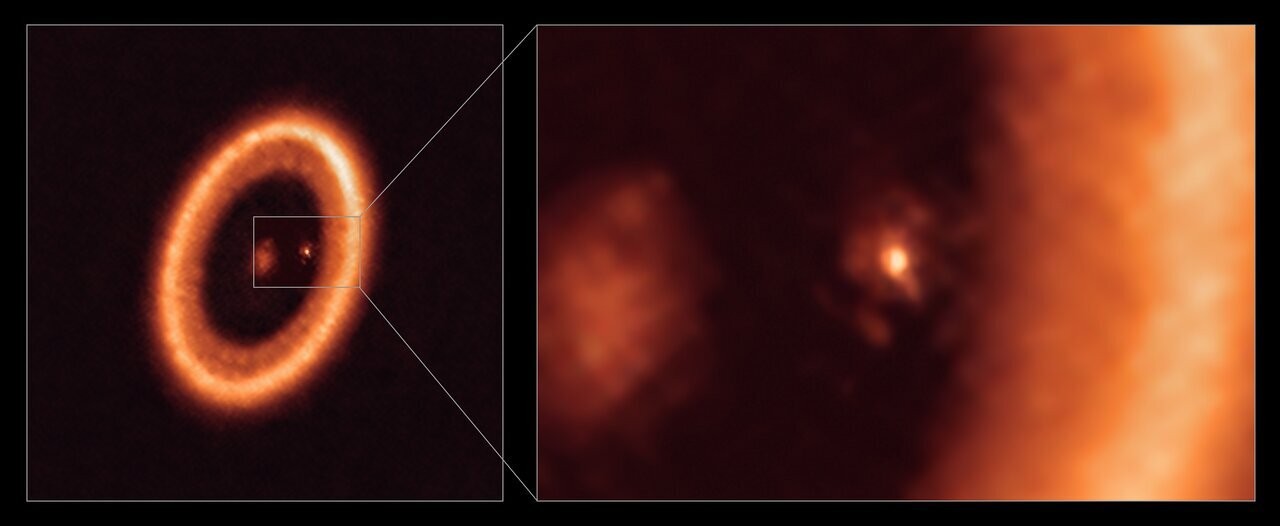Relying on the ALMA antenna network, in Chile, a team recently detected very clearly the presence of a disk around an exoplanet . This disc, the researchers note, would be massive enough to support the formation of several satellites.
We know that planets are born in disks of gas (circumplanetary disk) wrapping around young stars. This accretion disk, initially very hot, will cool over time, allowing the condensation of solid grains (rocks, ice), which will then grow by mutual collisions to form "planetsimals". The mutual accretion of these planetesimals will then lead to the formation of planetary embryos, and then to planets.
During this process, a planet may also acquire its own circumplanetary disk within which gas and dust may gather into larger and larger bodies, eventually leading at the birth of moons. But astronomers don't yet fully understand the details of this process. "In short, we still don't know when, where and how planets and moons form “, sums up Stefano Facchini, researcher at the European Southern Observatory (ESO), hence the interest of this new research.
Based on data from the Atacama Large Millimeter/Submillimeter Antenna Array (ALMA), Chile, Dr. Facchini and his team were able to identify the presence of a disk wrapping the exoplanet PDS 70c .
You will find this ball of gas accompanied by another planet – PDS 70b – around a star nearly 400 light years from Earth . The diameter of this disk is roughly equivalent to that of the Earth-Sun distance, or about 150 million km. It would also be massive enough to allow the formation of three Moon-sized satellites.
“Our work presents a clear detection of a disk in which satellites could form “, confirms Myriam Benisty, from the University of Grenoble, France, who led the research. "Our ALMA observations were obtained at such exquisite resolution that we were able to clearly identify that the disk is associated with the planet and we are able to constrain its size for the first time “.
The researchers also found that PDS 70b showed no clear evidence of such a disk.

These observations may shed new light on the planetary formation in young star systems. “More than 4000 exoplanets have been found so far, but all have been detected in mature systems “, underlines Miriam Keppler, researcher at the Max Planck Institute for Astronomy, in Germany. "PDS 70b and PDS 70c, which form a system reminiscent of the Jupiter-Saturn pair, are the only two exoplanets detected to date that are still in the process of formation “.
In the future, researchers plan to investigate this system further using ESO's Very Large Telescope (ELT), currently under construction in the Chilean desert of Atacama.